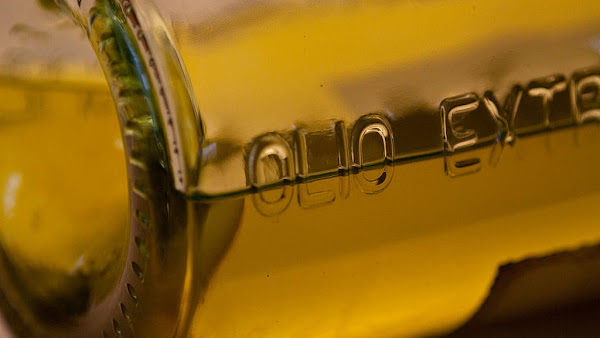Cuesta College, San Luis Obispo, CA
Cf. Giambattista/Richardson/Richardson, Physics, 2/e, Conceptual Question 23.8

Jim (MyArtistSoul)
flic.kr/p/6NqXvq
 A beam of light in Plexiglas® strikes the interface between Plexiglas® and olive oil, with an incident angle of 60.0°, and a transmitted angle of 61.2°. (Drawing is not to scale.) Light has a faster speed traveling through:
A beam of light in Plexiglas® strikes the interface between Plexiglas® and olive oil, with an incident angle of 60.0°, and a transmitted angle of 61.2°. (Drawing is not to scale.) Light has a faster speed traveling through: (A) Plexiglas®.
(B) olive oil.
(C) (There is a tie.)
(D) (Not enough information is given.)
Correct answer (highlight to unhide): (B)
Snell's law relates the indices of refraction with the incident and transmitted angles, where medium 1 is Plexiglas®, and medium 2 is oil:
n1·sinθ1 = n2·sinθ2,
and the indices of refraction for both materials related to the speed of light through them:
n1 = c/v1,
n2 = c/v2,
where the given (or assumed to be known) quantities, unknown quantities, and quantities to be explicitly solved for (or compared) are denoted.
From Snell's law, because θ1 is smaller than θ2, then n1 is greater than n2. From n = c/v, since oil has a smaller index of refraction, it will have a faster speed of light. This can be explicitly seen by substituting the relations for each index of refraction into Snell's law, and relating the speed of light in oil to that in Plexiglas®:
(c/v1)·sinθ1 = (c/v2)·sinθ2,
v2 = v1·(sinθ2/sinθ1) = v1·(sin(61.2°)/sin(60.0°) = 1.01187178523·v1,
Thus to the proper significant figures, the speed of light in oil is one percent faster than in Plexiglas®.
Student responses
Section 70856
(A) : 5 students
(B) : 6 students
(C) : 0 students
(D) : 0 students
Success level: 55%
Discrimination index (Aubrecht & Aubrecht, 1983): 0.67
No comments:
Post a Comment